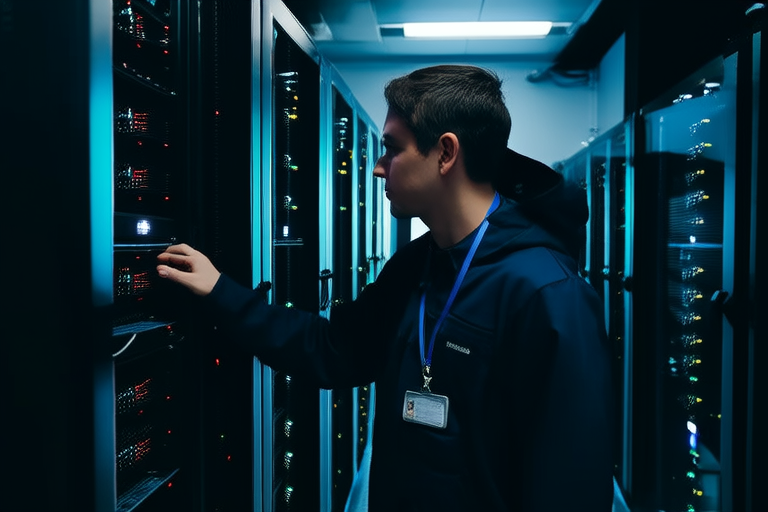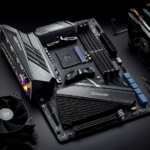Introduction
In today’s data-driven world, the ability to process and analyze information efficiently is paramount. Two technologies at the forefront of this transformation are cloud computing and edge computing. Cloud computing involves storing and managing data on remote servers accessed via the internet, enabling scalable and flexible solutions for businesses. On the other hand, edge computing brings computation closer to the source of data generation, reducing latency and enabling real-time decision-making. While each technology has its strengths, their integration creates a powerful synergy that addresses modern challenges in data processing. This article explores how combining cloud and edge computing is revolutionizing industries and reshaping the future of technology.
Understanding Cloud Computing
Cloud computing refers to the delivery of computing services over the internet, including storage, processing power, and applications. Its core features include scalability, flexibility, and cost-effectiveness, making it an attractive option for organizations of all sizes. By centralizing data storage and processing in remote data centers, cloud computing eliminates the need for extensive on-premises infrastructure. This centralized model allows businesses to access resources on demand, scale operations seamlessly, and reduce upfront hardware costs.
The benefits of cloud computing extend beyond cost savings. It enables collaboration by providing users with access to shared resources from anywhere in the world. Additionally, cloud platforms often come equipped with advanced analytics tools, machine learning capabilities, and robust security measures. However, cloud computing is not without limitations. Latency can be an issue for applications requiring real-time responses, as data must travel to and from centralized servers. Bandwidth constraints and reliance on internet connectivity further highlight the need for complementary solutions like edge computing.
Exploring Edge Computing
Edge computing represents a paradigm shift by decentralizing data processing and bringing it closer to the point of data generation. Instead of relying solely on remote servers, edge devices—such as sensors, gateways, and local servers—process data locally. This approach significantly reduces latency, as data does not need to travel long distances to reach a central server. Real-time processing capabilities make edge computing ideal for applications where milliseconds matter, such as autonomous vehicles, industrial automation, and healthcare monitoring.
Key use cases of edge computing include smart factories, where machines communicate and make decisions autonomously, and IoT networks, where devices collect and analyze data on-site. For example, in agriculture, edge devices can monitor soil conditions and adjust irrigation systems in real time. In retail, edge computing powers cashier-less stores by enabling instant transaction processing. By addressing the limitations of cloud computing, edge computing enhances efficiency and responsiveness, paving the way for innovative applications across industries.
The Synergy Between Cloud and Edge
The integration of cloud and edge computing creates a hybrid model that leverages the strengths of both technologies while mitigating their weaknesses. Cloud computing excels in handling large-scale data storage, complex analytics, and long-term insights. Meanwhile, edge computing provides low-latency, real-time processing for time-sensitive tasks. Together, they form a cohesive ecosystem that optimizes data flow and processing.
This synergy addresses several challenges faced by standalone systems. For instance, edge devices can preprocess data locally, filtering out irrelevant information before sending only the most critical data to the cloud. This reduces bandwidth usage and minimizes latency. At the same time, the cloud serves as a central repository for historical data and advanced analytics, enabling deeper insights and strategic decision-making. The combination also enhances scalability, as edge devices can handle localized workloads while the cloud manages global operations.
Efficiency is another key advantage of this hybrid model. By distributing computational tasks between the cloud and the edge, organizations can achieve faster response times and improved resource utilization. For example, in a smart city, edge devices can manage traffic signals in real time, while the cloud analyzes traffic patterns to optimize urban planning. This seamless collaboration ensures that data processing is both timely and comprehensive, driving innovation and operational excellence.
Applications Across Industries
The synergy between cloud and edge computing is transforming industries by enabling smarter, more efficient systems. In healthcare, wearable devices and medical sensors use edge computing to monitor patients in real time, alerting healthcare providers to potential issues instantly. Simultaneously, the cloud stores patient records and performs predictive analytics to identify long-term health trends.
Manufacturing is another sector benefiting from this hybrid approach. Smart factories leverage edge devices to monitor equipment performance and detect anomalies on the production line. The cloud then aggregates this data to optimize maintenance schedules and improve overall efficiency. Autonomous vehicles rely on edge computing to process sensor data and make split-second driving decisions, while the cloud supports navigation updates and fleet management.
In the realm of IoT, the cloud-edge synergy enables seamless connectivity and intelligent automation. Smart homes, for example, use edge devices to control lighting and temperature locally, while the cloud provides remote access and energy usage analysis. Similarly, smart cities integrate edge computing for real-time traffic management and environmental monitoring, with the cloud facilitating broader urban planning initiatives. These applications demonstrate the versatility and transformative potential of combining cloud and edge computing.
Challenges and Considerations
While the integration of cloud and edge computing offers numerous advantages, it also presents challenges that must be addressed. Security is a primary concern, as decentralized edge devices may be more vulnerable to cyberattacks compared to centralized cloud servers. Ensuring robust encryption, authentication, and regular software updates is essential to safeguard sensitive data.
Infrastructure requirements pose another challenge. Deploying edge devices necessitates significant investment in hardware and network connectivity, particularly in remote or underserved areas. Organizations must carefully plan their infrastructure to balance cost and performance. Additionally, managing integrated systems can be complex, requiring expertise in both cloud and edge technologies. Coordinating data flow, ensuring compatibility, and optimizing resource allocation demand careful planning and execution.
Standardization is another consideration. As the adoption of cloud-edge solutions grows, establishing industry-wide standards will be crucial to ensure interoperability and scalability. Addressing these challenges will require collaboration between technology providers, policymakers, and end-users to create a secure, efficient, and sustainable ecosystem.
Future Outlook
The future of cloud-edge synergy holds immense promise, driven by emerging trends and technological advancements. The proliferation of 5G networks will enhance connectivity, enabling faster and more reliable communication between edge devices and cloud servers. Artificial intelligence and machine learning will play a pivotal role, with edge devices performing real-time inference and the cloud supporting training and refinement of models.
As the Internet of Things continues to expand, the demand for hybrid solutions will grow. Innovations in edge hardware, such as more powerful processors and energy-efficient designs, will further enhance the capabilities of edge computing. Meanwhile, advancements in cloud platforms will provide more sophisticated tools for data analysis and visualization. Together, these developments will enable even more dynamic and responsive systems.
Looking ahead, the cloud-edge synergy has the potential to reshape entire industries and redefine how we interact with technology. From personalized healthcare to fully autonomous transportation, the possibilities are vast. By embracing this hybrid model, organizations can unlock new levels of efficiency, innovation, and value creation.
Conclusion
The integration of cloud and edge computing represents a groundbreaking advancement in data processing. By combining the centralized power of the cloud with the real-time capabilities of edge computing, organizations can achieve unprecedented levels of efficiency, scalability, and speed. This synergy addresses the limitations of standalone systems, enabling smarter applications and driving innovation across industries.
From healthcare and manufacturing to IoT and smart cities, the impact of cloud-edge collaboration is already evident. However, realizing its full potential requires addressing challenges such as security, infrastructure, and standardization. As technology continues to evolve, the cloud-edge synergy will play an increasingly vital role in shaping the future of data processing. By embracing this transformative approach, businesses and society as a whole can harness the power of data to create a more connected, intelligent, and sustainable world.


